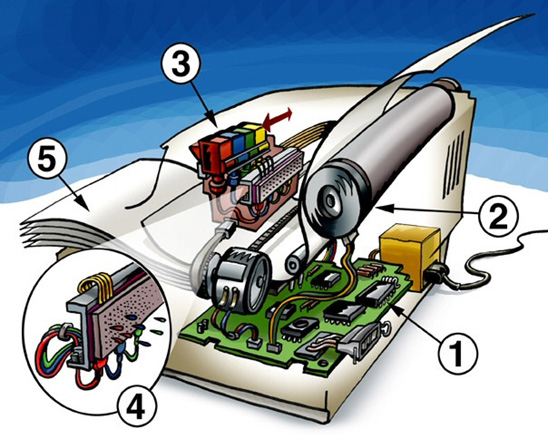|

On May 30, 2017, the U.S. Supreme Court confirmed the territorial limits of patent exhaustion in Impression Products v. Lexmark, stating in their decision that an authorized sale outside the United States, similar to one within the United States, exhausts all rights under the U.S. Patent Act. In the Lexmark case, the accused patent infringer, Impression Products, Inc. (hereafter Impression) refilled patentee Lexmark International, Inc. (hereafter Lexmark) printer cartridges acquired both within and outside the territory of the United States and then resold them within the United States. The Court’s ruling in Lexmark did not merely impact the secondary markets for toner cartridges, but is also set to impact some of the original equipment manufacturers (OEMs) parts suppliers in the context of manufacturing in Taiwan.
In the Lexmark case, Lexmark was the patentee and owned patents covering components and use methods for the cartridges, designs, manufacturing, and sale of toner cartridges to consumers in the United States and abroad. At the time when the consumers purchased the aforesaid toner cartridges, two options were provided: one was to buy a buy a toner cartridge at full price without any contractual restrictions; the other was to buy a cartridge at a roughly 20-percent discount through Lexmark’s return program, in exchange for the discount. Consumers taking up the latter deal had to sign a contract agreeing to one-time use and to refrain from returning the used cartridge to anyone but Lexmark. However, Impression acquired empty Lexmark toner cartridges, including cartridges purchased under the return program, from purchasers in the United States and abroad, refilled them with toner, and then resold them in the United States. Lexmark subsequently sued Impression for patent infringement. Impression moved to dismiss on the grounds that Lexmark’s sales, both in the United States and abroad, exhausted its patent rights covering the cartridges.
2017 Lexmark’s Ruling Reconstructed Patent Exhaustion
The Supreme Court in Lexmark reversed the Federal Circuit, holding that “once a patentee decides to sell - on its own or through a licensee - that sale exhausts its patent rights, regardless of any post-sale restriction the patentee purports to impose, either directly or through a license.” In other words, the Court confirmed international patent exhaustion doctrine, simply put, patent exhaustion applies to patented products sold outside the United States. In its reasoning, the Court reaffirmed the basic premise that the Patent Act just ensures one reward for every item to the patentee and only the patentee has the right to decide whether to make a sale that uniformly exhausts its patent rights in this lawfully sold item. There are two rules that were addressed in this case: first, post-sale restrictions may be enforceable under contract law between the patentee and the purchaser of the patented product, but do not entitle the patentee to retain patent rights in this sold item because exhaustion occurs automatically at the time of the authorized sale; second, patent exhaustion applies to sales of patented products, either made within or outside the United States.
Here, the Court’s ruling appears to be a huge restraint on the patentee extending its monopoly granted by U.S. Patent Law through post-sale restrictions. It appears to be a big victory for end users of the patented products (if the patentee chooses not to raise its selling price up front), but is it also a victory for OEM parts suppliers? A closer reading of the Court’s ruling suggests things are not quite as simple as they appear.
Shifts of Contours of Patentee’s Patent Rights after Lexmark
-
Breach of Contract Claims Still Enforceable
In Lexmark’s holding, patent exhaustion automatically applies to patented products once the decision to sell is made directly or under license by the patentee, regardless of any post-sale restrictions that the patentee purports to impose to maintain its patent rights. The authorized sale of patented items only terminates patent rights of the sold items, but does not affect the enforceability of the post-sale restrictions if any breach of contracts occurs. As such, either the end-user consumers or any party in the downstream transactions which has a contractual relationship agreeing to any post-sale restrictions with the patentee or its licensed seller, should be careful as to whether the post-sale use of the patented items potentially breaches any clauses of the post-sale restriction agreements. If the answer is yes, then the patentee may still enforce breach of contract claims instead of patent infringement.
-
Emerging Business Models to Avoid or Extend Triggering of Exhaustion
In Lexmark the Court stated in their decision that to trigger patent exhaustion, the sale of patented products must be through an “authorized sale,” either sold directly by the patentee or through a licensee. In Lexmark, the Court distinguished between authorized and unauthorized sales by examining whether the licensee complied with the licensing terms when selling a patented item, that means if the licensee fails to comply with the licensing terms agreed when selling an item, or if the licensee is not authorized to sell the item in question, then no patent exhaustion would be triggered to terminate patentee’s patent rights on such an item. As such, there are always ways for the patentee to avoid triggering patent exhaustion by being more creative with their business models. For instance, the patentee itself might utilize other entities that it substantially controls (like subsidiaries) but which haven’t been granted a license to sell the patented products to sell such items, in this case, patent exhaustion will not apply to such unauthorized sales and the patentee could “lawfully” maintain its monopoly on the sold items.
Other emerging business models, on the other hand, can lead to patent exhaustion being triggered and prohibit the patentee from suing on the grounds of breach of contract claims. If a patentee licenses Company B to sell patented products to any downstream buyers worldwide but not the patentee’s specified competitor Company X as part of its post-sale restrictions, for example. Company B is licensed to sell the patented products to Company C, and Company C can then resell these items to Company X. In this case the patentee has exhausted its patent rights for the products and has no “privity” to sue Company X for breach of contract claims in the post-sale restrictions. This would make it very difficult for the patentee to reclaim its losses.
Remarks to OEM Parts Suppliers in Taiwan
The Court’s ruling seems to affirm that OEM parts suppliers in Taiwan have the right to manufacture and assembly designated outsourced devices without any threat of patent litigation from U.S. patentees. The playing field between the U.S. patentees and OEM parts suppliers in Taiwan might tend to be more level on its face. Still, in the context of the downstream transactions, from the perspective of OEM parts suppliers, it never hurts to pay attention to certain inferences that can be made from the Lexmark’s ruling.
Be clear on the conditions under which the licensed seller is allowed to sell. Ensure the licensed seller has the rights to sell or lawfully licensed the patents covering the patented products for sale, that the licensed seller has legally licensed all the patents required to cover the patented items, that the patents licensed are valid and enforceable U.S. patents and so on.
Be clear on any pre-sale conditions or post-sale limitations imposed on the licensee when selling the patented products and specifically whether there are any contractual terms in the agreements with the patentee prohibiting the licensees from selling the licensed products (components) to any particular companies or for any specific purposes, or whether there are any “covenant not to sue” clauses or “cross-licensing” clauses contained in the agreements as conditions of the license to sell the patented items.
The considerations mentioned above should serve as a checklist for OEM parts suppliers in Taiwan before they purchase patented items covered by U.S. patents. Any missed check points might lead to the sale being considered an “unauthorized sale” and prevent the triggering of patent exhaustion, and could put the suppliers at risk of being sued by the patentee for patent infringement. Nonetheless, the Court’s ruling in Lexmark overall expands the safe zone for buyers in the downstream transactions as expected.
Article Main image: Public Domain
 |
|
| Author: |
Pauline Cheng |
| Current Post: |
Associate Professor, National Kaohsiung First University of Science and Technology |
| Education: |
PhD, Washington University in St. Louis |
| Research Fields: |
Intellectual Property Law
Biotechnology Law and Theory
E-commerce Law
|
|
|
|
| Facebook |
|
Follow the IP Observer on our FB Page |
|
|
|
|
|
|

